
Let's see the following situation: You are very anxious to explore the most famous path in Cusco, hiking the Classic Inca Trail, but Ops! You forget to book the trek and there are no more available spots for this trek!! Don't worry, many travelers forget to book Inca Trail in advance, but there are many alternative treks too. Here is the one that has become the favorite of those trekkers who don't want to miss the opportunity to go through the original path of the Incas. 2 days Inca Trail hike with camping is one of the best options to reach Machu Picchu. It gives you a sample of the Classic Inca Trail hike but it requires less time and less physical effort.
This hike includes 2 days of hiking on the Inca Trail and 1 night of camping in the Ruins Bridge. This version of the Short Inca Trail, 2 Day Short Inca Trail with camping, leaves from 104 km, located at 2,100 meters above sea level. (departing by train from Ollantaytambo). It is a 16-kilometer hike to Machu Picchu, where you will appreciate spectacular views of high Andean landscapes and the Amazon jungle eyebrow visiting Inca constructions along the route (Chachabamba, Choquesuysuy).
We will uphill gradually to the most important Inca Complex of Wiñaywayna "Always Young" (5 kilometers), located at 2,700 meters above sea level. The agricultural terraces called "Andenes" where Incas cultivate their supplies surround the entire mountain, decorating this ancient Inca castle with temples, shrines, buildings, and water channels. Imagine listening to the sounds of hummingbirds, quetzals, and roosters on the rocks since you wake up. It is one of the best things about the trip! Finally, you will see that few people wake up early and you will be one of those first lucky trekkers that will reach the famous Sun Gate or "Inti-Punku". Discover the best views of Machu Picchu through the 2-Day Short Inca Trail!
Inca Trail Tour Operator: Salkantay Trek Machu Tour Operator
Type of Service: Superior Service, All-inclusive comfortable camping equipment, tourist train, and private transport.
Fitness Level: Moderate - Some low-altitude hikes, but accessible to most healthy travelers. Punctuation number 2 from 1 to 5.
Age requirement: 4+ / All travelers 18 must be accompanied by an adult.
Professional Team: Bilingual Tourist Guide, Professional High Mountain Chef, Professional Tourist Transfer.
Accommodation: Camping (1 night).
Meals Included: 1x breakfast, 1x lunch, 1x dinner, 1x afternoon tea.
Transportation: Transportation by private van, 2x train tickets (Expedition train).
Starting Point: We pick you up from your hotel in Cusco.
Starting Time: 05:00 hrs
Pre-trip Information Point: Our guide will be meeting in your hotel 2 or 1 day before the trek
Briefing Time: 05:00 pm or 06:00 pm
Returning Point: Our transfer will drop you off at your hotel or Airbnb department in Cusco.
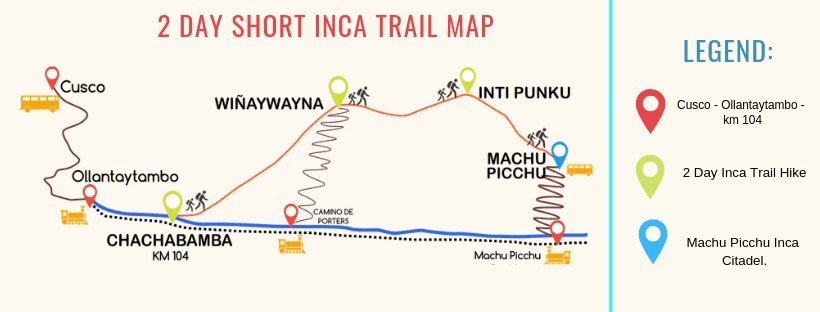
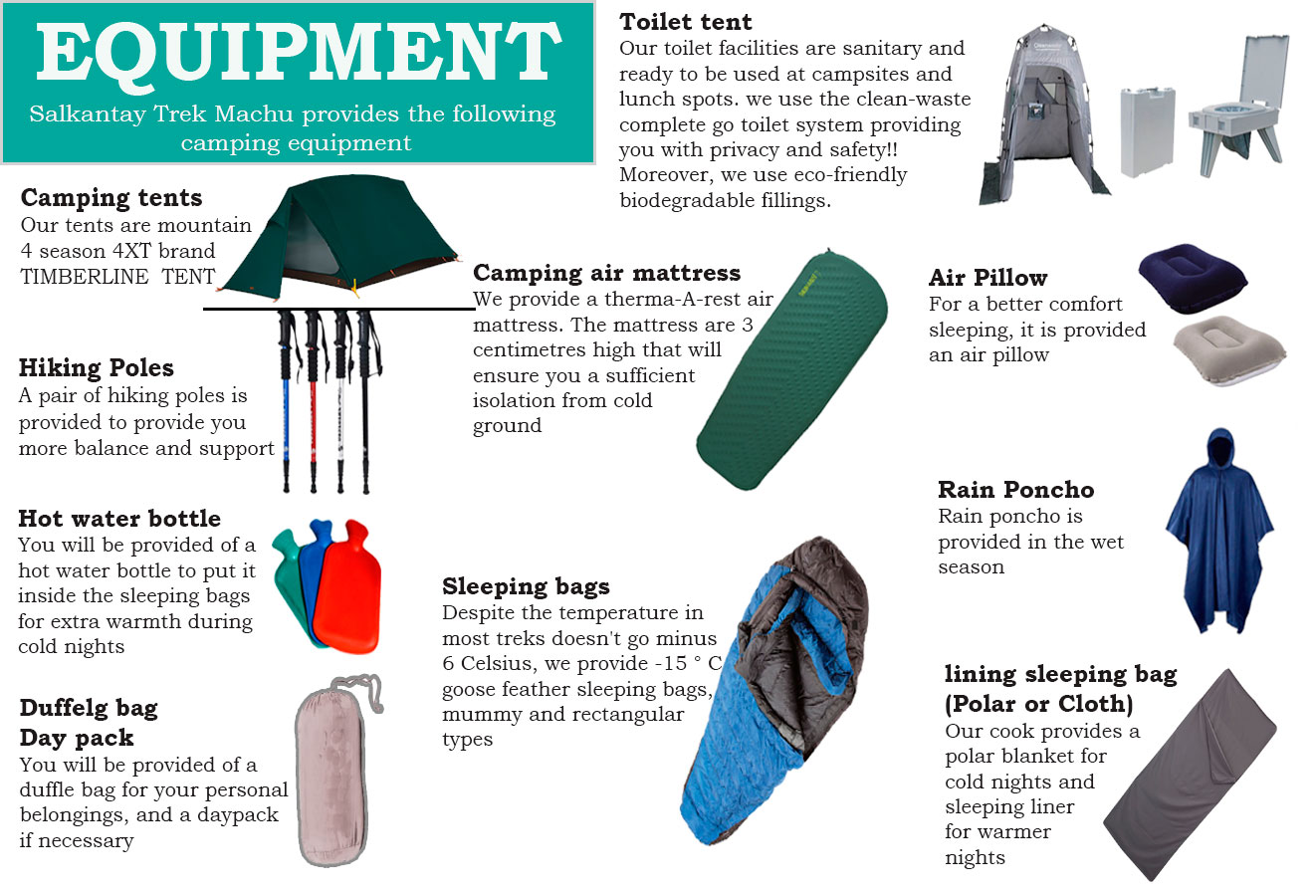
The Ministery of Culture is the only office that controls and authorizes access to the Inca Trail. Remember the unique way to buy your Inca Trail permit is through an authorized tourism agency. Access to the Inca Trail is limited to 250 people per day. For this reason, the Inca trail must be booked 2 or 3 weeks in advance, especially during the high tourist season (from April to October).
Unfortunately, if there is no availability for a specific date, you can only search for spaces on a different date. It is recommended to make the reservation months in advance. The Inca Trail is closed every year in February for maintenance; So, so that month is not available.

As we have already mentioned, February brings with it the heaviest rains of the season. So, it is impossible to climb the Inca Trail in February. During this month, conservation and maintenance work is carried out, damaged parts of the road are fixed, as well as terraces and campsites. However, at the end of January, the Deconcentrated Directorate of Culture of Cusco (DDCC) and the Headquarters of the Historic Sanctuary of Machu Picchu (SHM) announced that they will advance the closure of the Inca Road Network from January 23, 2020, Later the same Directorate of Culture announced that the tourist operations in the Inca Road Network would resume from March 16. The surprising announcement is due to the increase in rainfall in the area of the Inca road network, which has led to the fall of rocks in different sections, so it seeks to safeguard the integrity of visitors.
You can check the Inca Trail Availability for 2025 in real time by clicking on Book Online!


Ready to star this new adventure? So, early at morning we will pick you up from your hotel in Cusco, to transfer to the train station in Ollantaytambo for approximately 1 hour and 30 minutes and start our Short Inca Trail hike during the tour you will be able to observe the Sacred Valley of the Incas, farmlands and majestic snowcapped mountains; in Ollantaymtambo we will board the train that will take you to km. 104 the trip is about 1 hour and this is the point where we will start with our hikking adventure.
Once in km. 104, we will pass by the bridge that is on the Urubamba or Willkamayuc River which translated from Quechua means Sacred River, which was very important for them. When you arrive at the control point you have to show the identification documents, either Passport or Registration Card or National Identity Document. After walking 15 minutes, we will have the opportunity to see the archeological center of Chachabamba and Choquesuysuy that are hidden in the semi-tropical forest, after your visit we will begin the walk through tiers upwards until we reach the next place on the way we will observe the sacred valley, waterfalls and different types of orchids of the semi-tropical forest.
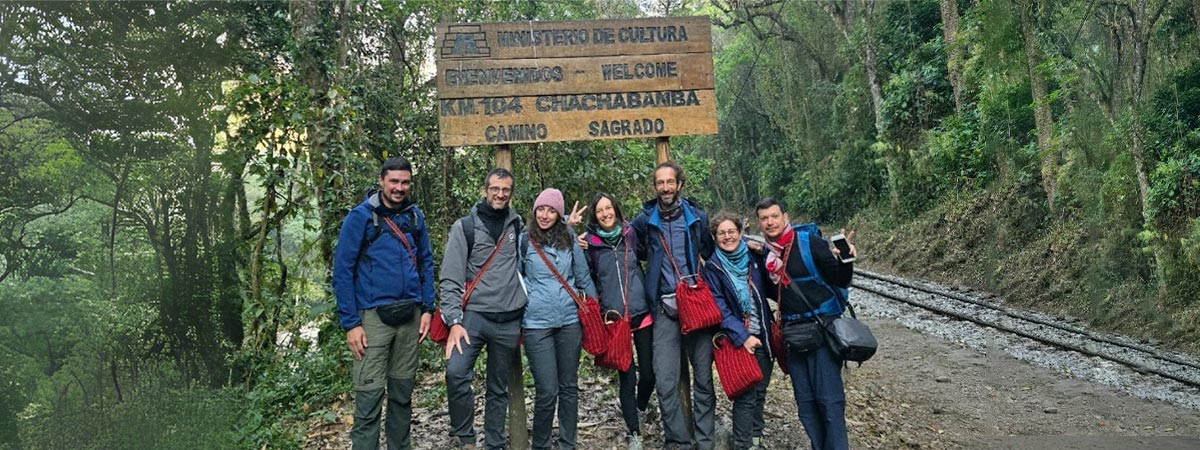
| Km 104 - Chachabamba |
Then after 3 hours of walking we will arrive at Wiñaywayna (2,650 m / 8,694 ft) it shows a perfect example of what agriculture was in the time of the Incas, since along its skirts lie a large number of circular terraces, where the Incas cultivated different agricultural products. The name Wiñaywayna comes from a beautiful orchid that abounds in the area and that has as meaning in Spanish "Eternally young" and has more than 20 buildings, one of them the Temple of the Rainbow also called Temple of Fertility, the visit will be 1 hour on average, then you will enjoy the box lunch to replenish energy and continue until you reach the Wiñaywayna control.
In this second part of the tour we will walk for 2 hours through an Andean path, stone stairs and tambos ("resting places") until we reach the Inti Punku - Sun gate (2,720 m / 8,923 ft) that during the Incas functioned as control of entry to the Citadel of Machu Picchu; From here you have an impressive panoramic view of Machu Picchu and the entire surrounding valley, then descend for approximately 30 minutes to the wonder of the Machu Picchu world (2,490 m / 8,169 ft) and finally take the bus to our campsite (2,160 m / 7,086 ft) the trip lasts 15 minutes, here we will spend the night in "Ruins Bridge" camp, located next to the Urubamba River. In the afternoon we will have tea time with hot drinks and some snacks, and then have a delicious dinner that will be prepared by our specialized cook.
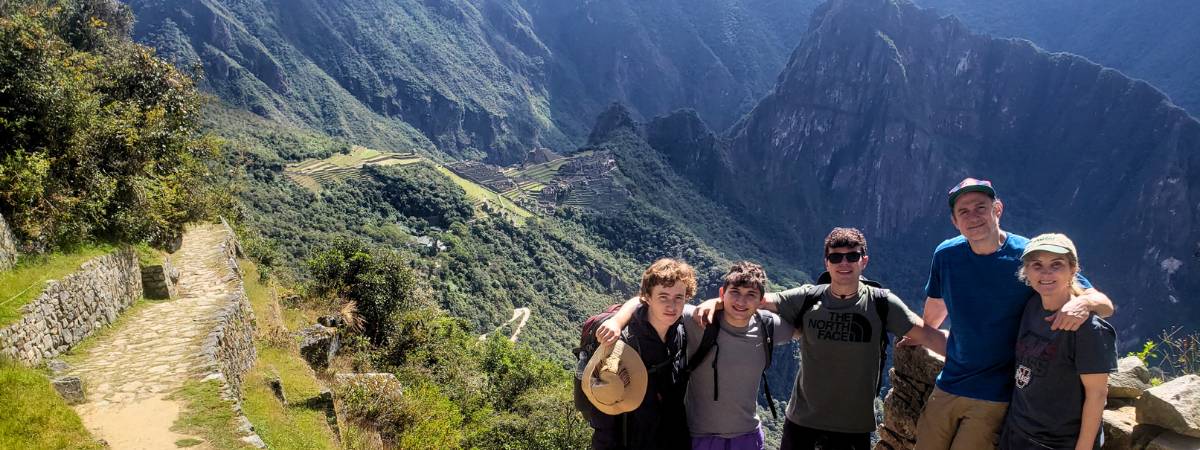
| Inti Punku - The Sun Gate |

In the second day of our Short Inca Trail Hike we will get up early and have a wonderful breakfast Then we will make a walk of about 30 minutes, to reach the Citadel of Machu Picchu at 06:00 am and be able to appreciate the majestic sunrise. We will have a guided tour of 2 hours and 30 minutes to know the most important places of Machupicchu, you can visit the most amazing places like the Royal Mausoleum, the Temple of the 3 Windows, the Main Temple, the Sacred Plaza, the famous Intihuatana where the wise Incas tied the sun on the winter solstice in June, steps, squares, fountains, etc. After the tour you have a free time to visit Machu Picchu on your own and take some amazing pictures. At opportune time we will board the bus from Machu Picchu to the town of "Aguas Calientes" to board the train back to Cusco.
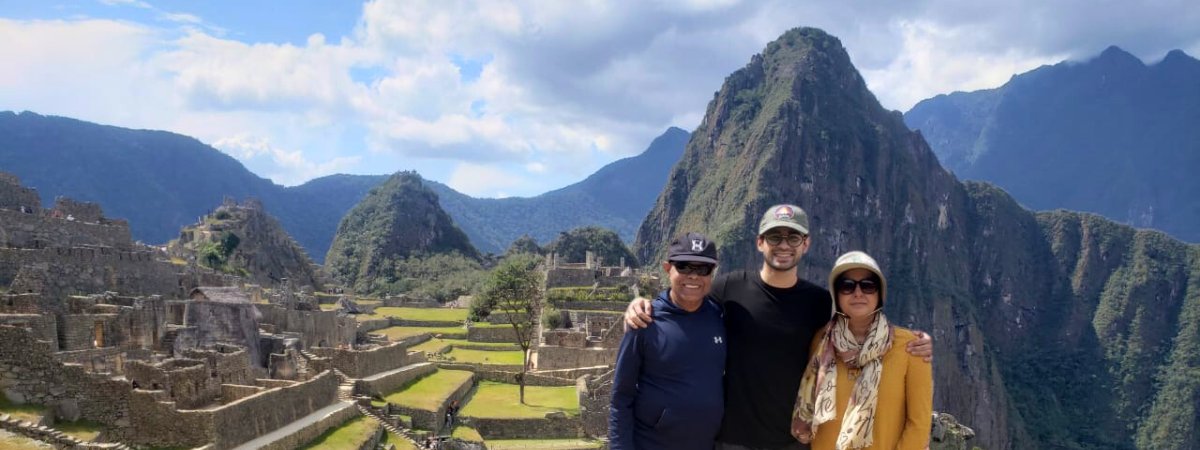
| Citadel of Machu Picchu |



Salkantay Trek Machu Tour Operator will provide you the camping equipment for your adventure. Our tents are of the brand EUREKA MOUNTAIN PASS 3XTE designated for 4 seasons. We provide a 3 people capacity tents; however, just 2 people use it! In this way, we provide you more space and comfort.
In case of a single traveller, we provide a 2 people capacity tent. After each trek, we carefully check our tents and fix them if necessary!
Also, we will provide you a sleeping bag, inflatable pillow and blanket. Once arrived to each campsite, you will find inside your belongings and camping equipment

The guide will visit you a day before the trek in your hotel for the briefing. So, it is important let us know the exactly address of your hotel or Airbnb department.
All passengers are accompanied by a Professional Tour Guide. They are trained to provide you information about the visited places, offer suggestions of what to see and do, and translate any conversation with native people. Also, every representative are trained to solve your questions and attend any of your requirements, you can call us to +51 984004472 and we will solve your doubts.

Meal budget: Please allow USD 10 for meals not included on the last day Aguas Calientes town.
Solo Traveller: If you like a single room for this trek, please choose the "Solo Traveller" option during your booking.
Local flights: No local flight is included in the trek´s price!

On the Inca Trail Trek with Camping is included the following train service:
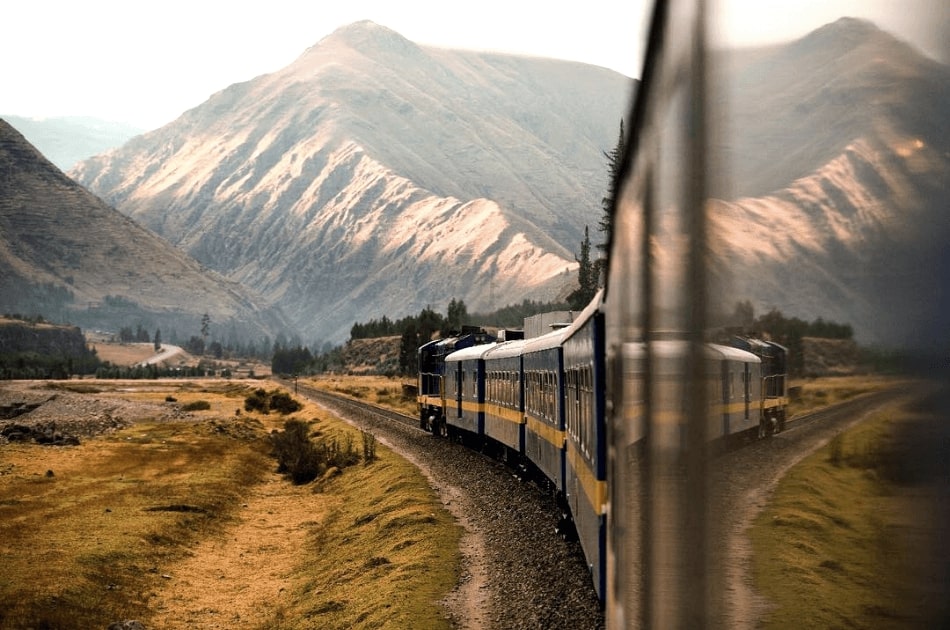
Ollantaytambo - Machu Picchu
|
|
Departure |
Arrival to Inca Trail |
|
Expedition 81 |
06:10 |
07:40 |
|
Expedition 83 |
7:45 |
09:45 |
Machu Picchu to Cusco
|
|
Departure |
Arrival to Ollantaytambo |
Arrival to Cusco |
|
Expedition 74 |
14:55 |
16:31 |
18:30 |
|
Expedition 84 |
18:20 |
20:05 |
22:00 |
|
Expedition 86 |
20:50 |
22:50 |
23:50 |
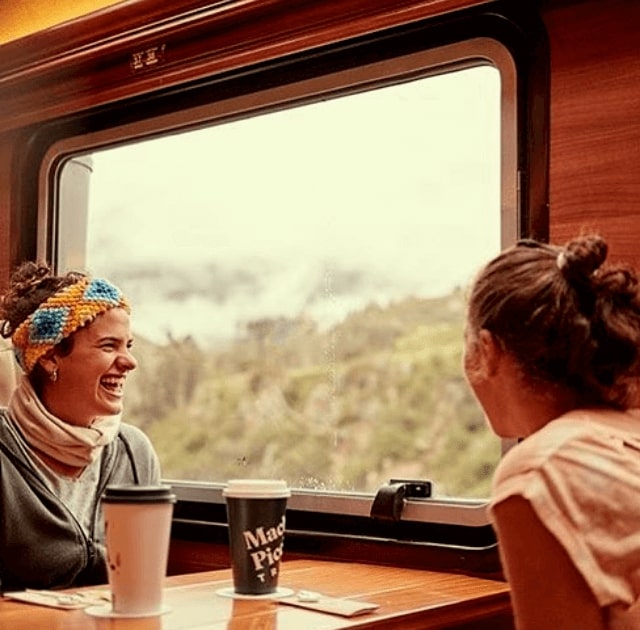
Ollantaytambo - Machu Picchu
|
|
Departure |
Arrival to Inca Trail |
|
The Voyager |
06:40 |
08:01 |
|
The Voyager |
07:40 |
09:30 |
Machu Picchu to Cusco
|
|
Departure |
Arrival to Ollantaytambo |
Arrival to Cusco |
|
The Voyager |
14:30 |
15:56 |
18:40 |
|
The Voyager |
19:00 |
20:41 |
22:30 |
|
The Voyager |
20:20 |
21:59 |
23:00 |
On the Expedition and The Voyager is not included extra service inside the train. Our transfer will pick you up from the train station to take you back to your hotel in Cusco.
If you prefer Vistadome train or Machu Picchu Train 360 for this trek, the extra price is U$ 65 dollars. You must let us know every requirement when you are booking your trek.
The Vistadome train service includes the following services:
The 360° train service includes the following services:
We pick you up from your hotel in Cusco. Also, if your accommodation is located in Ollantaytambo, Chinchero, Urubamba or Yanahuara. Nevertheless if your accommodation is located outside this towns you must tell us the location with anticipation.
Important Note: In case you will spend night in Ollantaytambo, Our guide can pick you up from your hotel and you can have a U$ 10 discount per person.

Qhapac Ñan is a Quechua word that means 'main road'. It was a system of roads established by the Inca empire, which traveled more than 30 thousand kilometers through different geographies located in the current countries of Peru, Bolivia, Chile, Argentina, Ecuador and Bolivia.
It should be noted that this immense network of roads is famous for crossing the Andes Mountains, from the mountains of Argentina to the mountains of Colombia, passing through the city of Cusco, the capital of the Inca empire. This route was built using mainly stone.
The longitudinal route that traveled hundreds of kilometers along the South American coast near the Pacific Ocean is also admirable. These paths were wider but they did not have the consistency of stone but the smoothness of sand.
The Inca roads of the mountains and the coast were joined by transversal sections that, at the same time, forked towards other sections that penetrated regions of the jungle. In order to travel these long stretches, the Incas built bridges, tunnels, causeways, walls, stairways as well as deposits (colcas) and shelters (tambos).
The main function of the Qhapac ñan was to communicate the city of Cusco, the center of Inca power, with the rest of the provinces of the empire. Likewise, because the roads were built during the expansionist era, they fulfilled a function of political, administrative, cultural and social domination of the recently conquered peoples.
During pre-Inca times, the different cultures and human groups that inhabited the southwestern territory of South America built some sections of roads that were improved and expanded during the Inca empire.
The famous emperor Pachacutec (1400 - 1471) was the one who initiated the Inca expansionist process as well as the construction of the main sections of Qhapac ñan for new conquered territory.
The successor Inca emperors continued with the expansion of the Qhapac Ñan as well as the construction of bridges, warehouses and shelters along the roads.
In the 16th century the Spanish arrived in Cusco ending the Inca empire and destroying its main temples, palaces and buildings. However, they kept many sections of the Qhapac ñan, which favored them for trade.
Currently, the road network of the Incas is considered a ‘Cultural Heritage of Humanity’ by Unesco. Many stretches are protected by the nations where they are located. One of the most famous routes is the one that reaches Machu Picchu through the Intipunku, the original gateway to the Inca city.
This route started from the city of Cusco in a northwest direction towards the coast, crossing the current towns of Palpa, Nazca, Lima, Huarmey, Lambayeque, Piura, Tumbes, Quito and Pasto in Colombia.
This route started from the city of Cusco, crossing the Andes Mountains in a north direction, going through the current towns of: Vilcashuaman, Jauja, Tarma, Huánuco, Huaritambo, Huancabamba, Siguas, Conchuco, Andamarca, Huamachuco, Cajamarca, Chachapoyas, Tumibamba, Loja, Quito and Pasto in Colombia.
This route started from the city of Cusco in an easterly direction to connect to the royal road of the coast (it crossed the current towns of Nazca, Palpa, Inca), and then followed the southern road through the towns of Tambo Colorado, Catarpe, Arica, Copiapó, the pampas of Tucumán to the Maule river in Chile.
This route started from the city of Cusco, crossing the Andes Mountains in a southerly direction, including the Collao plateau. It crossed the current towns of Juliaca, Chucuito, Chuquiago, La Paz, the pampas of Tucumán until it descended to the city of Santiago in Chile.
The Qhapac ñan crossed difficult geographies where only the use of a bridge could allow the passage. Due to this, the Incas built different types of bridges, which can be divided as follows:
Rustic and simple constructions that used the trunks of a tree to unify two nearby points. One of the most famous examples is the 'Inca Bridge' located in Machu Picchu.
Constructions made of straw joined together to form long rope bridges, which reached up to 60 meters in length. They had to be renewed from time to time. One of the most famous that survives to this day is the Inca bridge of Queswachaka.
Rustic stone constructions placed one on top of the other to form a solid path for traversing short distances over cliffs. Due to the passage of time, most of these types of structures were destroyed.
Simple construction made of solid vegetable fibers that served as pillars, which transported people or food in a basket or table. They were used mainly to traverse the rivers of the rainforest. They are still used today in some communities.
Structures made of totora (a plant located on the islands of Lake Titicaca), which joined together served to transport people by water. They were used to navigate from one island to another in this lake in Peru. Currently they are also used for the construction of simple boats.
The apachetas were offerings that the Incas made during their journeys through the Inca roads. These consisted of placing one stone on another invoking good luck for the long journey. This custom is still valid in the Andean peoples, who still retain the worship of the mountains (Inca gods).
For the construction of the Qhapac ñan, the Incas adapted to the geography. On the coast the roads were wider. In the sierra mountains snaked and in the jungle they crossed narrow cliffs. Of course, they always took care of nature, finding a harmony between the paths and the natural life around them.

The best months (coldest and driest) are June, July and August. The problem: they are also the most demanded. To avoid crowds it is best to go before or after the rainy season (from March to May) or from September to November.
Naturally, it is advisable to be in good shape, and prepare the weeks before the trip with other excursions and long walks. Of course, the boots have to be used and checked that they do not blister.
Six months in advance if we want to visit it on dates outside of high season, and from six months to a year if we want to do it from May to early September. The two-day route is also usually the same or more crowded and booking months in advance is more than a must.
This excursion cannot be done on your own: it is mandatory to book it through an authorized operator. It is necessary to give the passport number and show it at the controls along the way.
Permissions cannot be transferred: name changes are not allowed.
Make sure that the circuit includes at least shop, food, cook, one-day entrance to the ruins and return trip by train.
The equipment porters are always included although each one carries their personal luggage, including the sleeping bag. There are also more exclusive services for private excursions.
It is advisable to bring walking poles, a small first-aid kit, sunscreen, sandals or crocs for the camp, a down jacket, raincoat, hat and gloves, sun hat, travel towel, tamed hiking boots, thick socks, underwear thermal, fleece, hydration canteen or backpack, mosquito repellent, long pants and sunglasses.
The Inca Trail is not the only route to Machu Picchu. There are more versions of both the Inca Trail and other trails. These are the most popular:
A more cultural option, best done with a guide.
It is a longer and more picturesque route, although exhausting, that accesses Machu Picchu by a path a little more difficult than the Inca Trail.
It is a route devised by providers and guides that leads from Cuzco to Machu Picchu passing through Santa Teresa and that offers options of two to five days to do the way by bicycle, on foot or by raft.

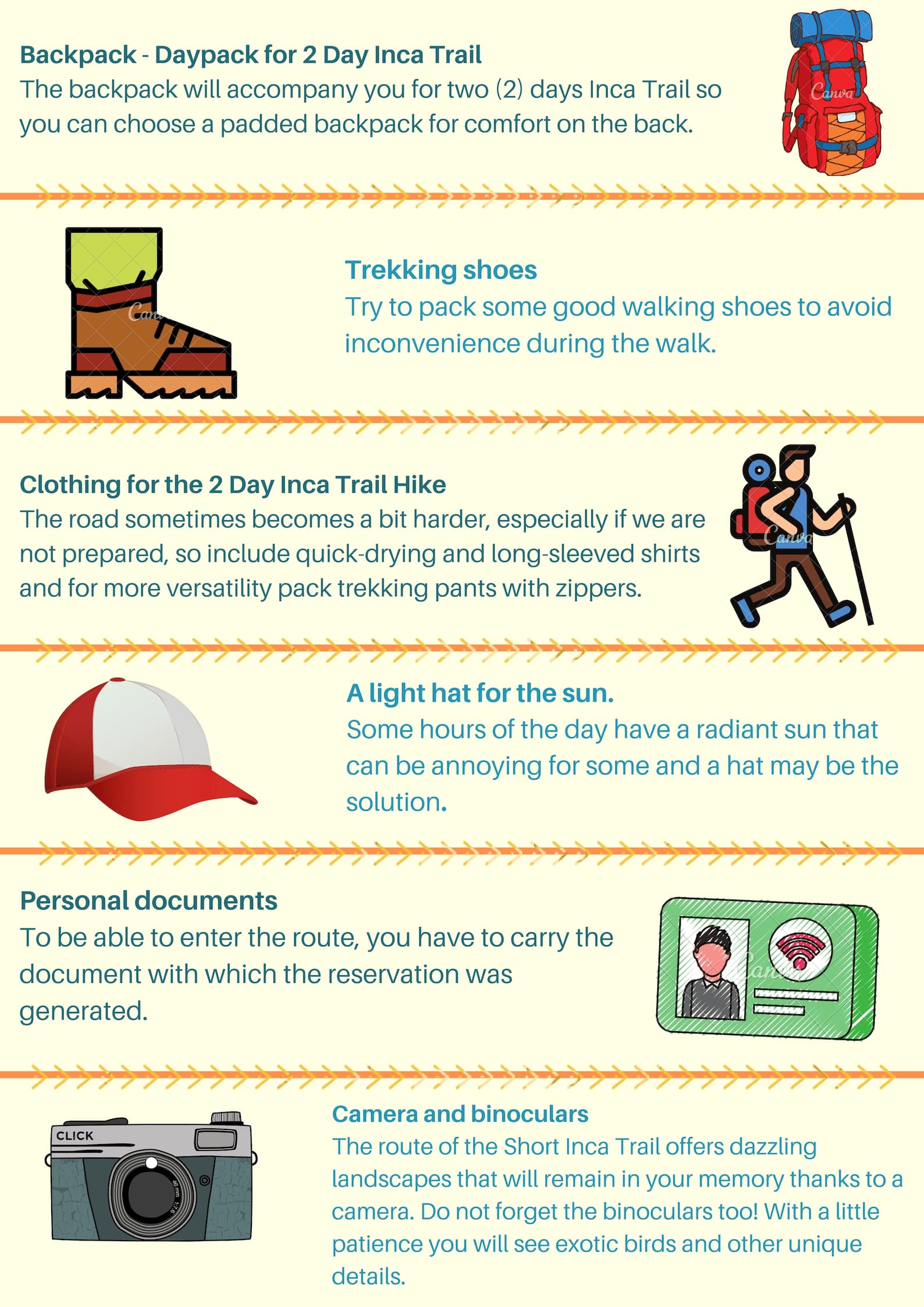
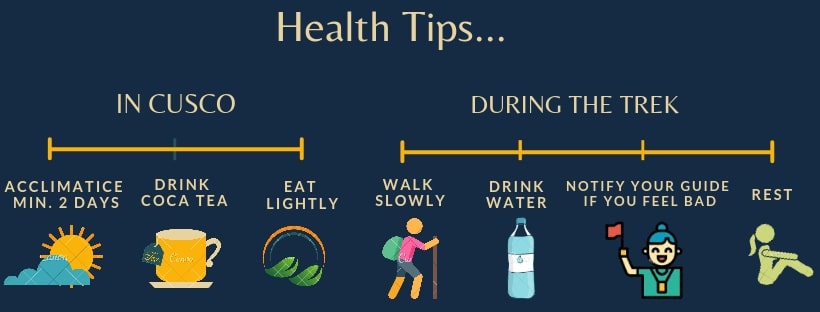
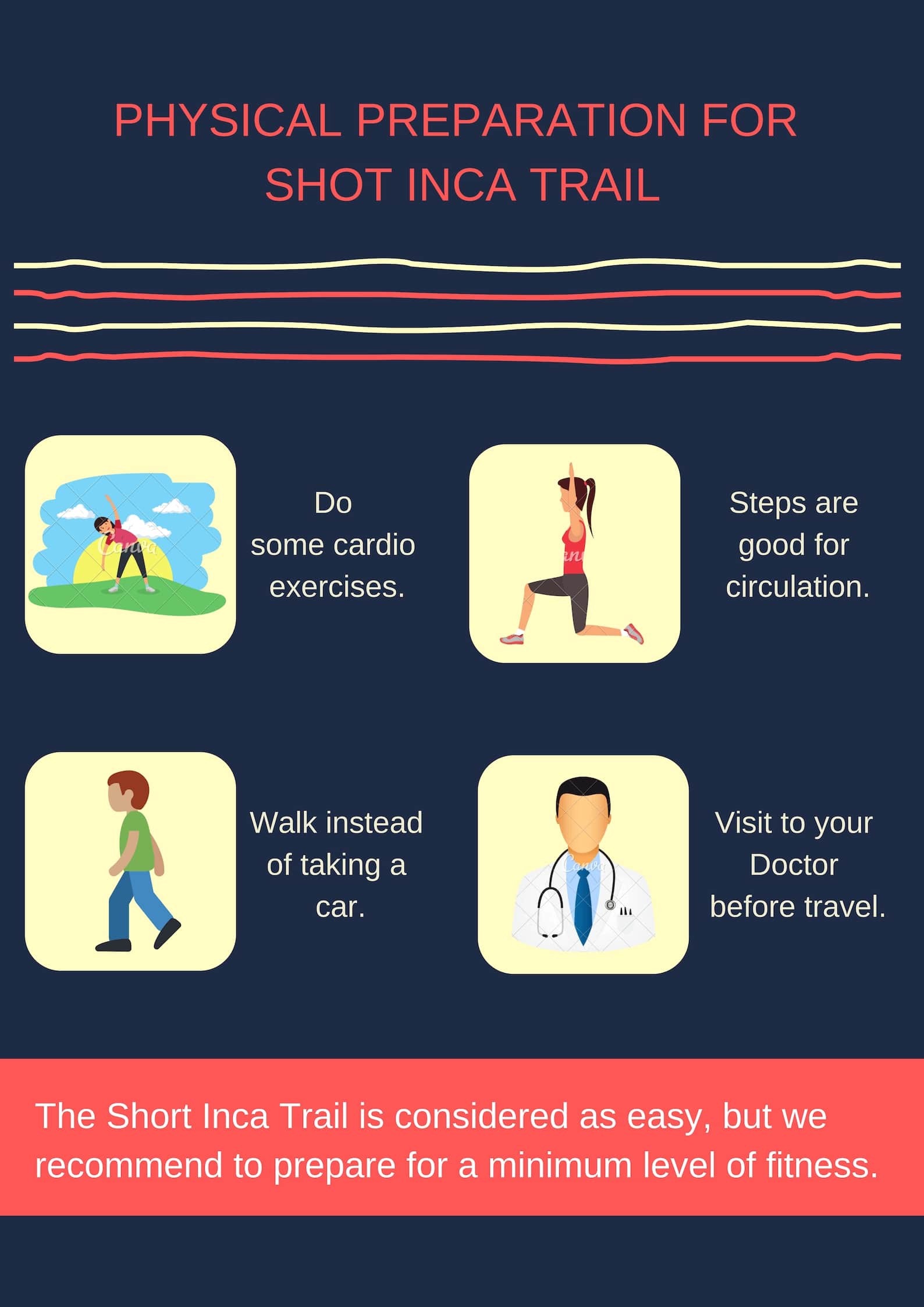

Maximum Altitude: 2680 Mts / 8792 ft
Minimum Altitude: 2100 Mts / 6888 ft
Maximum Altitude: 2100 Mts / 6888 ft
Minimum Altitude: 2400 Mts / 7872 ft
The Inca Trail is considered a difficult expedition not only because of the distance but also because of the high altitude at some point along the way. The highest point on the road is at ‘Abra Warmihuañusca’, at 4,224 meters (13,860 feet).
The entrance to the legendary Inca highway is strictly controlled. This is how it seeks to protect the Inca Trail that is more than 500 years old and the wonderful natural environment that surrounds it.
The Inca Trail is closed in February. During that month, the rains are heavier and can make the journey through the trails of the Inca Trail very difficult. The guards take advantage of these days to maintain the road and the Inca structures. The rest of the year, this hiking trail is open to the public.
Cusco and the entire southern region of Peru are marked by two different climatic seasons: the rainy season (from November to March) and the dry season (from April to October). The best time to do the Inca Trail is the dry season. The climate in those months is warm and with little frequency of rains.
If you plan to visit the Inca Trail during the dry season, it is advisable to bring a hat, sunscreen, mosquito repellent, sunglasses, light clothing during the day and warm clothes at night.
If you plan to visit the Inca Trail during the rainy season, it is recommended to bring a rain poncho, a windbreaker jacket, non-slip shoes and a walking stick.
The trek is slightly difficult. If you have a physical preparation before, it will seem not so difficult or heavy.
For example, one of the difficulties is having to go up and down stone bleachers that are all along the route. It is NOT a dangerous tour, but you must walk through the places assigned by the authorities and the guide and you must NOT be impertinent or want to go or go through places not due as you could suffer an accident; Remember that this tour is part of our vacation, therefore it is better to be careful and careful.
The trek lasts approximately 6 to 7 hours until you reach the Puerta del Sol known as Inti Punku, where you can get the first panoramic views of Machu Picchu.
The Inca Trail is not dangerous. The security measures in place include first aid equipment. The tour guides are trained to act effectively in any type of emergency.
The trails of the Inca Trail are wide and well signposted. For no reason the tourist should risk his life looking for roads on his own.
The maximum height is in the ‘Abra Warmiwañusca’ (4,200 m.s.n.m.). This altitude can cause physical difficulties.
Older adults can feel physical exhaustion more intensely during the Inca Trail. They should check with their doctor before hiking.
The Inca Trail is allowed to people of any age. Children or adolescents can do the walk accompanied by their parents. It is preferable that minors like long walks and camping.
After visiting Machu Picchu with the Inca Trail, the return is with a train trip from Aguas Calientes to Ollantaytambo. From there, a minivan transports tourists to the city of Cusco.
Train services are established by each tourism agency. If the visitor wants a better service, he must request it and add the cost.
Each group that does the Inca Trail has a maximum of 16 tourists. Some agencies also offer 'private services'.